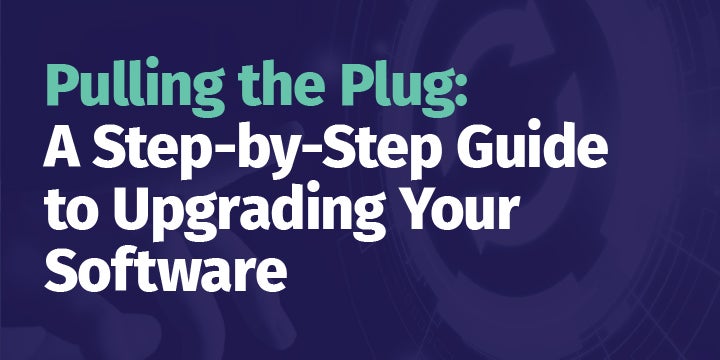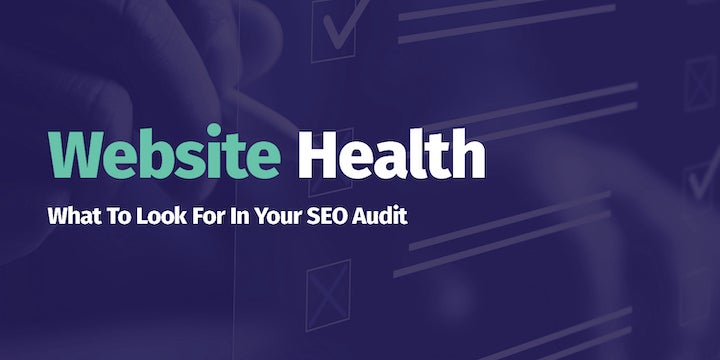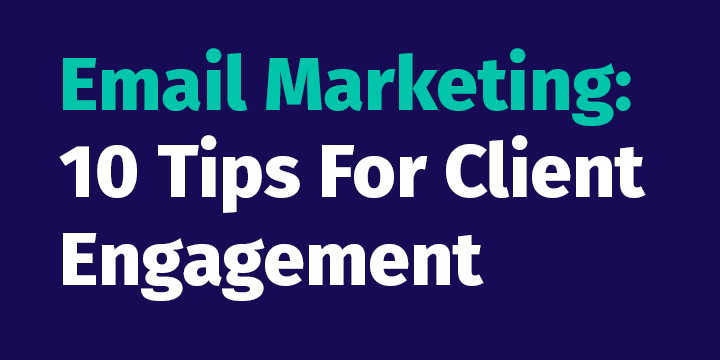Ready To Grow: How To Find And Keep Good Customers

Your first interaction with a potential customer is your first opportunity to impress or disappoint them. This begins long before they’ve even considered doing business with your company. It starts with your marketing efforts and the first words you ever say to each other.
Once your marketing efforts have set a positive first impression, and they have contacted your company for services, it’s time to put in the work to make them trust you to handle both their immediate and long-term needs.
It Starts With Acquisition
Success can’t happen if you don’t have a thoughtfully presented image of your business and a deliberate plan to acquire new customers. While there are many factors that contribute to a successful customer acquisition strategy, here are the fundamentals.
Evaluate Your Assets
Take an honest and reflective look at the way you currently do things and develop ways to improve processes where needed. You’ll set up your company to provide the best possible experience to your customers without your own policies and procedures getting in the way.
1. Think about what you’re doing now to attract new customers and what’s working. Decide areas you can improve, and develop ways to do so. While you’re at it, research what other companies in your industry have done in other markets and see if some of these activities may also work in your area. If you tried something several years ago that worked well, consider bringing it back.
2. Tweak and improve administrative processes. Consider whether there are new technologies that could make your daily operations more streamlined and customer friendly. Smart technician routing, customer portals, and easy sign-up methods are proven ways to maximize efficiency and profitability in the field service industries.
3. Have a professional review and recommend ways to improve your website and social media presence. You want to ensure it’s easy for customers to find you and even easier to take their next steps.
4. Review your pricing. Your prices should be in line with what others in your area are charging. Prices that are too high or too low could influence your customers.
5. Research and identify ways to improve customer service. Mobile tools are a great way to improve the customer experience and increase loyalty. Allowing customers to make quick payments on their phones or taking some quick pictures of trouble areas you can show your customer later, for example, are excellent ways to set yourself apart from competitors and leave a favorable impression long after the service is complete.
Have A Plan
Write out your goals and how you intend to achieve them. This should include a basic plan to onboard new customers as well as a detailed list of the platforms, processes, timelines, and staffing that will be needed to reach success. Make sure you define your ideal customer, including where they live, what they do and why they need your services.
Master your marketing. Determine the platforms that make the most sense for your business to connect with potential customers, including social media, traditional media, pay-per-click digital advertising, direct mail, and referral campaigns. Chart out a detailed three-month plan of action, as well as a less detailed yearlong overview.
Focus on messaging that will set you apart from your competition while resonating with your target audience. If marketing isn’t your strong suit, it’s a good idea to partner with professionals who can advise you on best practices.
Service comes first. As important as it is to attract new customers, it’s even more important to keep them. Consider the fact that it costs 5% more to attract a new customer than it does to keep one. You want to make sure your existing customers are as happy and satisfied as possible.
Win trust. When a customer trusts you to keep their problems under control, you owe it to them to do it right. From the first interaction with your account representative to the explanation of services rendered, the customer should experience nothing but the highest level of professionalism.
Focus on recruiting good employees and train them to do their job well. This includes the level at which technicians perform their duties as well as how informed and authoritative they are when speaking with customers out in the field. Invest in good equipment and comprehensive training programs to make sure they’re presenting themselves in a way that accurately reflects the positive reputation of your business.
Provide incentives that motivate employees to do their job well. At the end of the day, a happy employee will be an invaluable tool in keeping your customers happy and satisfied with the service you provide.
Finally, make sure you handle all unexpected problems or complaints quickly, professionally and with minimal inconvenience to your customer. Issues with services are inevitable, but how you respond to them can save your relationship with a customer.
Focus On Relationships
People want to keep working with those who make them feel good. While it may seem strange to make people feel good when you’re in a business like pest control or lawn care for example, it’s exactly what you’re doing every day.
The best possible situation is you handle a problem your customer can’t or won’t take care of on their own, and you do it professionally and in a way that respects their busy lives. When a customer feels valued, and as though they are a partner in the relationship, they are much more likely to not only remain loyal, but become one of your strongest advocates.
Recognize that face-to-face encounters are some of the best opportunities you will have to strengthen a customer relationship. This injects the human element into the meeting in a way a telephone call never can.
Make sure your employees know how important this part of the relationship is and that you are relying on them to reflect your company appropriately. Train them to prioritize customer service and make sure they know to report back any potential problems (or opportunities) they encounter.
Here are a few tips to keep in mind:
1. Respond to all phone calls, emails, direct messages, and other interactions quickly and enthusiastically.
2. Set expectations and then live up to them. If you fail, figure out why and fix it as quickly as possible.
3. Ensure that your field personnel are presenting themselves in line with your expectations. Their uniforms should be clean and in good repair, and their demeanor must be friendly and helpful. The importance of this can’t be overstated.
Make Sure Customers See You And Your Team As People, Not Simply A Business
Taking a friendly tone with your customers helps your team look professional and makes you easy to do business with. Extending that same positive attitude to your social media channels can further strengthen your reputation in the marketplace and add a human touch to your online customer interactions.
Having your employees identify themselves by first name when responding to social media posts, for example, can remind your prospects and customers that they’re dealing with real people and not some faceless company.
Finally, it’s important to solicit your customers’ opinions in the form of customer surveys, online reviews, and in-person check-ins. Let them know you value their input and don’t forget to thank them for their efforts.
A 10% increase in customer retention can mean a 30% increase in company value.
Technology To The Rescue
Advancements in technology have changed much about the way we do business. It’s streamlined our internal processes and given us powerful tools like intelligent tech routing and real-time reporting to maximize efficiency.
Fortunately, many more technology solutions can improve the customer experience and add to their overall satisfaction and your success in retaining their business.
Top tools to assist you in this at all stages of your customer relationship include:
Simplified customer sign up. Digital solutions that allow on-the-spot customer sign ups eliminate the logistics of time-consuming paper agreements that can hinder the start of a relationship. When you help them get started quickly and immediately, you start the relationship off on the right foot.
Customer portals. Simplify the overall customer experience by empowering them with an intuitive digital solution that will allow them to manage all aspects of their account on their schedule, including scheduling, payments, viewing service history and leaving feedback.
Autopay. Giving your customers options is always a great idea. Allowing them to automatically pay for reoccurring or subscription-based services helps ensure there’s no break in their services and minimizes your collection woes by reducing the likelihood of forgotten payments. It’s a win-win any way you look at it.
Say Thank You
Nobody likes to feel that they have been taken for granted. Unfortunately, some companies are guilty of doing just that with their most loyal customers.
It’s important to remember the power of a simple “thank you.” When you take the time to issue a heartfelt “thank you” to your customers, you’re letting them know that you appreciate them and are grateful for their business.
While it’s important for customers to hear this often and by everyone they come in contact with from your company, it’s also important to say it in different ways.
Try sending a handwritten thank you card to customers on the anniversary of their first service. The personal touch that comes with this low-cost, high-impact effort is well worth your time.
Additionally, you can send occasional discounts, bonuses, or quick notes just to say thank you. Everyone likes to be thanked, and people are more generous and happier to interact with those they know value them.
When A Customer Ends Services, Evaluate The Reasons
When one of your long-term customer relationships unexpectedly ends, it’s time to set aside your feelings and do an evaluation of the account. Avoid the temptation to make excuses for the loss or to simply shrug it off. If an avoidable incident was the reason they left, it’s to your benefit to make sure you don’t see it repeated with any of your remaining customers.
An evaluation can be ugly business, but it’s important nonetheless. While it may be uncomfortable at the moment, it will:
Provide evidence-based answers for why something went wrong
Allow you to educate your team in ways to avoid this situation in the future
Improve the foundations of your service activities
So, how do you do it? Here’s a simple framework for a successful post service evaluation. Make sure you get the input of all those who were involved in the relationship or customer departure event. You’ll want to answer these questions:
What went well throughout the relationship?
What didn’t go well?
Considering this relationship only, is there anything that you should start or stop doing?
Was there anything that happened in this situation that you could have anticipated or planned for but was neglected?
Call up your lost customer and ask a few questions, such as their opinion of the services they were provided and the positive and negative aspects of those services. Ask what you could have done to improve the relationship. If they’ve signed up for new services from a competitor, ask what your competitor offers that you don’t.
When you’ve completed this, think about what it all means and whether anything can be taken from this customer loss to prevent the loss of future customers.
While the goal of any service-based company should be 100% retention, that’s not entirely realistic. Customers leave for many reasons. You can only control some of these, but it’s imperative that you evaluate them all.
Learning From Your Wins
Winning over a new customer and earning more business is always cause for celebration. But before you break open the champagne, be sure to take some time to see how you got there. Here are a couple of questions to help you get the process started:
How did you acquire the lead? Want to know which marketing activities are working and which ones aren’t worth your time and money? Follow the trail of breadcrumbs back to the beginning. Did your new customer do a quick online search? If so, what keywords did they use? Did they click on one of your paid online ads? Perhaps one of your technicians or salespeople dropped by for a chat or left a flyer at their home or office. Maybe a friend or relative referred your business. The possibilities are endless.
Tracking this information is key to your success. Once you know what’s working, you can do more of the same and find ways to improve the process. Then you can re-evaluate the areas that aren’t working so well and either spend less resources on them or find new approaches to yield better results.
Your operations software should be a big help in this department as you track this data.
How did you convert them? Knowing where your leads come from only tells half the story. The other side of the equation is finding out what made them decide to sign up and do business with you.
Did they read a stellar online review? Maybe a promotion or special offer drove them over the edge. Did they talk to a salesperson, technician, or office employee? If so, it’s always a good idea to talk to your team and find out more about their approach. Perhaps you’ll discover something you can use to train the rest of your employees.
Tracking your lead generation and conversion activity can play a pivotal role in your future success. Don’t skip out on this crucial step.
Your Partner In Growth
We hope this guide has been helpful. Whether you’re looking to add efficiencies, make things easier for your employees, improve your customer experience, increase sales, or anything in between, FieldRoutes is committed to helping your business reach its full potential.
The platform automates all aspects of field service operations for enterprise and small business customers that span office management, advanced route optimization, payment processing, digital sales, marketing, and customer acquisition solutions that accelerate growth, streamline operations, increase customer retention, and maximize revenue. Our operations and marketing suites were built with your customers and employees in mind and can help you grow quickly, scale intelligently, and serve customers relentlessly.
Call for a Demo at 207.492.4235
Join the growing number of thriving businesses using FieldRoutes to acquire new customers, improve automation, and crush the competition.





